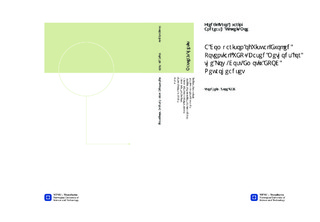| dc.contributor.advisor | Thomassen, Asbjørn | nb_NO |
| dc.contributor.author | Hvaring, Fredrik Tron | nb_NO |
| dc.contributor.author | Ulltveit-Moe, Andreas H | nb_NO |
| dc.date.accessioned | 2014-12-19T13:41:49Z | |
| dc.date.available | 2014-12-19T13:41:49Z | |
| dc.date.created | 2014-10-01 | nb_NO |
| dc.date.issued | 2014 | nb_NO |
| dc.identifier | 751718 | nb_NO |
| dc.identifier | ntnudaim:11364 | nb_NO |
| dc.identifier.uri | http://hdl.handle.net/11250/253847 | |
| dc.description.abstract | Brain computer interfaces (BCIs) enable interaction with computers through electrical brain signals recorded from the scalp through an electroencephalogram (EEG). These BCIs are characterized by expensive equipment and long setup times, which limits their commercial use. In this thesis, a BCI was implemented that uses the low-cost EEG acquisition device Emotiv EPOC and visual evoked potentials (VEPs), which are potentials in the EEG elicited by visual stimulus. A structured literature review was conducted to find which techniques are used in state of the art VEP-based BCIs. The four most promising techniques found through the literature review were implemented and tested using Emotiv EPOC. Three of these methods use steady state visual evoked potentials (SSVEPs), which are VEPs elicited by a periodic stimulus. Two of these methods use canonical correlation analysis (CCA) and one method uses power spectral density analysis as feature extraction techniques to detect frequency information in the recorded EEG. The last of the four methods uses code-modulated visual evoked potentials (c-VEPs), which are VEPs elicited by stimulus following a pseudorandom pattern. Experiments showed that a c-VEP implementation is not possible using Emotiv EPOC due to a synchronization issue between the stimulus and the recorded EEG data. All three SSVEP techniques reached satisfactory results. One of the methods using CCA reached an average information transfer rate (ITR) of 32.92 bits/min, which is the highest reported ITR for any VEP-based BCI using Emotiv EPOC in an online setting. | nb_NO |
| dc.language | eng | nb_NO |
| dc.publisher | Institutt for datateknikk og informasjonsvitenskap | nb_NO |
| dc.title | A Comparison of Visual Evoked Potential (VEP)-Based Methods for the Low-Cost Emotiv EPOC Neuroheadset | nb_NO |
| dc.type | Master thesis | nb_NO |
| dc.source.pagenumber | 126 | nb_NO |
| dc.contributor.department | Norges teknisk-naturvitenskapelige universitet, Fakultet for informasjonsteknologi, matematikk og elektroteknikk, Institutt for datateknikk og informasjonsvitenskap | nb_NO |

